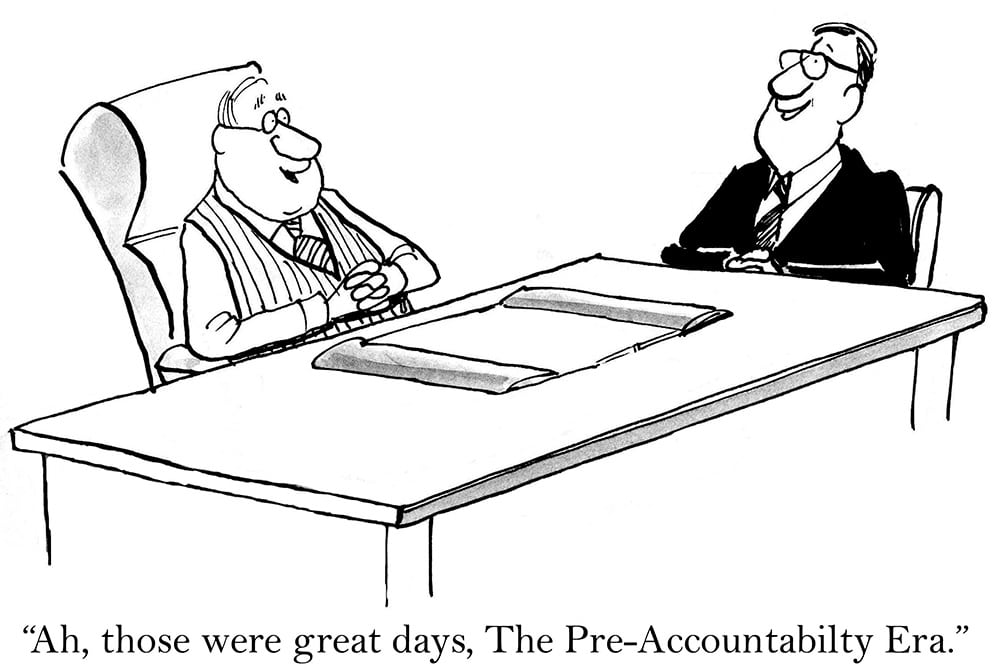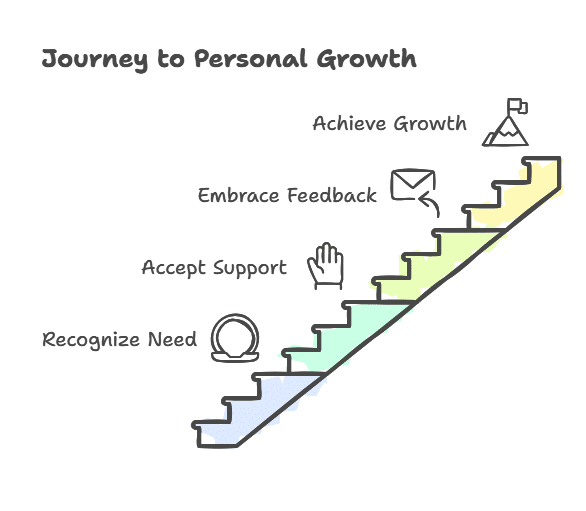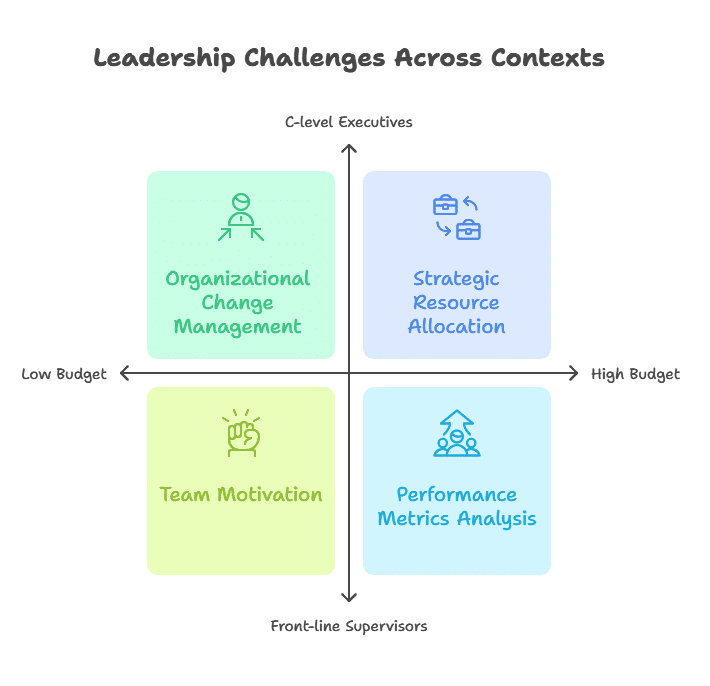Protected: Testimonials for D. Kevin Berchelmann
Password Protected
To view this protected post, enter the password below:
To view this protected post, enter the password below:

— Buckle up, buttercup, it’s going to be a wild ride!
D. Kevin Berchelmann
The business landscape isn’t just changing, it’s doing Warp 10 while too many leaders are still metaphorically screwing around with their flip phones.
You can almost hear them mumbling, “Why fix it if it ain’t broken?”
Spoiler alert: it’s broken.
Leaders crushing it going forward aren’t necessarily those with the longest resumes. They’re the ones willing to question everything they know, tear up the damned playbook, and refine skills that actually matter in today’s crazy world.
Frankly, if you aren’t careful, your decades of experience might be your biggest liability.
The future of leadership isn’t about authority, it’s about adaptability, empathy, and take a deep breath — a dose of humility.
To be sure, experience is valuable, but it’s not a static asset; it needs to be constantly updated and refined. The adage, “20 years of experience, or 1 year of experience 20 times over?” holds incredibly true today.
Experience alone just isn’t enough.
If you don’t understand the fundamentals of today’s environment, you’re just flying blind while pretending to be a pilot. You need to have a grasp on some of the nitty-gritty details, the challenges, the opportunities, even if it means getting your hands dirty.
So, what does it take to be a leader in this brave new, sometimes-whacky world? It’s not about having the right answers, it’s about asking the right questions, embracing the unknown (trust me, there’s plenty to go around), and building no-kidding, lasting connections with your team.
As technology evolves and challenges mount, leaders who don’t adapt risk irrelevance. Whether it’s building trust, making hard decisions, or mastering those fun-filled “difficult discussions,” leadership skills aren’t optional; they’re your survival kit for now and later.
Don’t just lead. Lead better.
Admitting you don’t know everything doesn’t make you weak, it makes you human. It shows your team that you’re open to learning and growing, and it creates a culture of psychological safety where people feel comfortable taking risks and asking questions.
For my clients, you’ve likely heard me describe my role as the guy “asking stupid questions that you have to answer.”
And frankly, if you’re unsure about something, chances are others on the team are too.
I hate to be the bearer of bad news, but the days of unchecked and ridiculously abundant resources are long gone. Budgets are tighter, timelines are shorter, and teams are burning out faster than ever.
Take a gander at your current workflows, asking yourself: Are there any bottlenecks? Can we automate anything (without causing automatic crap)? Can we simplify things without sacrificing quality?
Stay flexible and adjust plans on the fly when necessary.
Just because your title says Director, VP, President, even Grand Poobah, doesn’t mean people will blindly follow you. In fact, they’re probably side-eyeing you, waiting to see if your actions match your words.
Transparency is king: Be open and honest with your team, even when the news isn’t great. Sharing information builds trust. You’ll need that.
Leadership is a muscle, not a trophy or static state. I live it daily in my world, and can say without question that you never stop learning. The more you work on it, the stronger you’ll get.
Leading today for tomorrow isn’t going to magically “click” one morning as soon as you’ve skimmed a couple of LinkedIn posts. Even if those LinkedIn posts are mine (here’s my profile!). It’s not about power from a pedestal; it’s about being a part of the conversation.
It’s about learning alongside your team, managing resources effectively, building trust, and focusing on the people side of leadership.
Leadership is a conversation, not a monologue.
The leaders who will thrive in 2025 and beyond are those who are willing to question their experience, build new skills, and lead with a people-centered approach.
Or, you know, be a dinosaur. The choice is yours.
And remember that grace and accountability can coexist.

So, we’ve all heard the word “accountability” bandied about, right?
You know – sitting in a meeting with someone droning on about holding people accountable like it’s some sort of magical solution; babbling about tracking progress, scrutinizing deadlines, or making sure nobody screws up, or there’ll be hell to pay.
It doesn’t have to be that way—and it shouldn’t be.
True accountability is all about creating the culture or environment where people feel empowered to take ownership of their work. It’s about trust, open communication, and letting folks succeed on their own terms.
If you get this accountability stuff right, it’s like a whole new level of motivation and creativity (and performance!) with your team.
Accountability often gets a bad rap. People usually see it as micromanagement with a fancy title. We hold someone accountable.
It’s like, “Is your work done yet? Is your work done yet?”
That’s not accountability, that’s just annoying. And it certainly doesn’t inspire anyone to, you know, do their best work.
Another common mistake? Thinking accountability is about pointing fingers when things go wrong.
Who the hell wants to take risks if they’re constantly worried about getting blamed?
Real accountability is about ownership. It isn’t about fear; it’s about trust.
It’s about making the space where people want to be responsible. You create the right environment, offer support, and then… people will simply amaze you.
So, how do we actually do this whole accountability thing? Let’s get practical. It all starts with open communication and trust.
Honestly, think about the best managers or leaders you’ve ever worked with or for – the ones who really brought out your best. Chances are good they didn’t micromanage or breathe down your neck constantly.
No, they made you feel heard, supported, and empowered to make decisions. Like Maya Angelou said, “…people will forget what you said, people will forget what you did, but people will never forget how you made them feel.” (That’ll make you all warm and squishy inside)
Start with the easy stuff:
Then there’s this trick I call “interim deadlines.” Think of them like GPS checkpoints on the way to the final destination. Little progress markers that make everything way less intimidating.
Say there’s a report due in two weeks. Instead of saying, “Get this done,” and hoping for the best, try asking for smaller check-in points. “When would be a good time for us to check in?”
And here’s a tip: when that checkpoint rolls around, respond with encouragement, not critique. Keep asking: “Is there anything you need from me?” Can make all the difference.
Want your team to really take ownership of their work? Let them know—clearly— that failing isn’t the end of the world.
Accountability really gets a foothold in environments where risk-taking is embraced and mistakes are actual learning moments, not court martial offenses.
Instead of “What the hell were you thinking?!” try “Walk me through your thought process—how’d you arrive at that decision?”
A trick for building trust: celebrate the messy middle. Acknowledge progress, even if it’s imperfect. When people feel genuinely safe to try, they’re more likely to own both their successes and their missteps.
Don’t you hate it when your boss (or spouse?? never mind…) tells you what to do every second of the day? Teams feel the same way. Accountability gets a foothold when they’ve got some freedom to make decisions—and are expected to stick to them.
Of course, autonomy doesn’t mean unfettered chaos, nor does it mean self-employed. A supportive structure lets people move forward without derailing.
Look, accountability isn’t some quick fix or management trend to implement. Let’s stop treating it like a dirty word; it’s not about micromanaging or nitpicking, it’s about an environment of ownership and trust.
So next time someone says, “Let’s hold people accountable,” flip the script. “I’ve got a great idea, let’s instead create a culture of accountability. An environment where accountability isn’t forced—it’s simply the natural way people work.
Crazy talk, isn’t it?
Nope, not even close. Micromanaging is about control, while accountability is about trust and ownership. It’s about truly owning that responsibility and being driven to see it through successfully, not just checking the boxes.
Responsibility is about having a specific task or obligation. Accountability goes a step further – it’s about truly owning that responsibility and being driven to see it through successfully, a positive result.
You can try, but it won’t be pretty. Trust is the foundation of real accountability. Open communication, celebrating wins (and learning from mistakes), and showing genuine appreciation go a long way.
Consistency and genuine investment are crucial. One-on-ones can’t just be an obligatory checklist – they need to be focused, meaningful conversations where you make your team feel heard.
Highlight the measurable benefits – a team that’s engaged, motivated, and ready to conquer the world (or at least their to-do list). Appeal to data but also share real-world examples of teams that have embraced true accountability and the transformations they’ve seen.
If you’re intrigued by the idea of executive coaching, or if you’re simply tired of being your own excuse, I’d love to discuss.
Reach out if I can help in any way.
And remember that Grace and Accountability can coexist…

Yeti courtesy of fantastic client…!
As a seasoned (beats “old”) executive and leadership coach, I’ve had the privilege and honor of working with myriad top-tier leaders and executives for over 20 years.
And let me tell you, it’s been a wild, crazy, and usually fun ride.
Also sometimes hectic, disturbed, frustrating and leaving me mumbling what the hell…? But that’s a different article.
One thing I’ve learned is that even the most successful, high-achieving individuals among us can benefit from a little guidance and support. Some more than others (oops, did I say that out loud?).
But why?
Well, for starters, it ain’t what you don’t know that gets you into trouble. It’s what you know that just ain’t so.
I first heard that phrase when used by a board chair describing why he supported his CEO in this coaching endeavor. I know now that Mark Twain may have said it earlier, but I also know that this board chair said it better.
It’s the things we’re absolutely certain about, but are actually dead wrong, that can really get in the way.
We’ve all been there: convinced that our way is the best (or only) way, that our gut instinct always serves us well, or that our decades of experience have given us untoward wisdom as a superpower.
But the truth is, there’s always room for improvement, and a fresh perspective can be just what we need to avoid an unnecessary misstep.
Like in tennis, when execs make blunders they really could have avoided, I call them unforced errors. Those hurt. And they suck.
Another Matrix-like reality is that you don’t always know with certainty if the success you’re having is because of you or in spite of you. Are you really bending the spoon? That’ll bake your noodle…
I can get carried away with movie references, sorry.
I mean, think about it – have you ever looked around at your team and wondered, “Are they just humoring me, or do they actually think my ideas are straight-up genius?”
Okay, maybe that’s just me.
But how often do we attribute our success to our own decision-making, instincts, acumen or brilliance, when it just might be due to a combination of factors, like luck, circumstance, or even the herculean efforts of others?
That maybe all of our suggestions are praised because of our business card, not our brilliance?
Though initially a tough pill to swallow, acknowledging to the world that we don’t have all the answers can be incredibly liberating.
And then there’s the age-old adage, the favorite of my colleague and friend Kevin Ross: “Be the reason, not an excuse.”
Every day we make this choice – we can be the reason our folks succeed, or we can be the excuse they give when they fail. And every day, you have to choose.
It sometimes feels like a subtle distinction; it’s not.
When we’re willing to own our mistakes, take responsibility for our actions, and actively seek to improve, we become the reason our teams thrive.
Sounds eerily like accountability. We are the exemplar for other positive behaviors.
But when we’re too proud to ask for help, too afraid to admit our weaknesses, or just too damned stubborn to change a course, we become the excuse they use to justify their own shortcomings.
We become the exemplar for their poor behavior and/or performance.
So, what does all of this have to do with executive coaching?
Well, everything.
As a coach, my job is helping you separate the things that ain’t so from the things that really matter – to you and your team.
I’m here to help you realize when your success is due to your own efforts versus just dumb luck.
And by the way, there’s nothing at all wrong with a little luck here and there. Go play golf. Just be cognizant of the difference, so you can map out future efforts.
Most importantly, I’m here to support you in becoming someone’s reason – not their excuse. The example that others use daily, and the person they point a finger to when others ask how something should work.
It’s not about being perfect; it’s about being willing to learn, grow, and adapt.
And let’s be real, who among us hasn’t benefited from a little bit of guidance and support at some point? Even coaches have coaches. I do.
If you’re intrigued by the idea of executive coaching, or if you’re simply tired of being your own excuse, I’d love to discuss.
Reach out if I can help in any way.
And remember that Grace and Accountability can coexist…

As an executive coach, I get to see leadership in action across all kinds of organizations. After reflecting on my chats and visits with clients this past year, I’ve put together ten important lessons going forward that really stood out.
These aren’t just theories from a textbook—they’re insights I’ve gathered right from the frontlines of corporate life that will help you navigate your 2025 with success.
(Mrs. Burch, my 3rd grade English teacher, is rolling in her grave.)
Look, all the C-suite endorsements, mentorship programs, and golden opportunities won’t matter one bit if someone isn’t demonstrably hungry for their own growth.
I had a client, a next-level exec—a rising star on paper—who had it all: executive sponsorship, a clear path to the top, the whole shebang.
But they remained stubbornly head-down in the weeds, refusing to accept the support, feedback, or assistance offered.
Can’t push a rope, folks. 
When you keep a struggling leader (particularly a senior leader) too long, you’re not just losing 𝑤ℎ𝑎𝑡 𝑐𝑜𝑢𝑙𝑑 𝑏𝑒–productivity, performance–you’re actively damaging 𝑤ℎ𝑎𝑡 𝑖𝑠.
Your credibility takes a hit, and the whole team knows it.
It’s a slow leak in your leadership boat–eventually, 𝑒𝑣𝑒𝑟𝑦𝑜𝑛𝑒 𝑔𝑒𝑡𝑠 𝑤𝑒𝑡.
Address performance issues head-on, particularly within leadership. Your team will thank you for it (trust me on this).
Want to hear something uncomfortable?
Growth, progress, improvement–all require 𝑐ℎ𝑎𝑛𝑔𝑒.
And yet we are frequently surrounded with voices that whisper “we’ve always done it this way” in our ear.
Those comfort-seeking echoes? They’re the death knell of progress.
When everyone’s nodding, 𝑠𝑜𝑚𝑒𝑜𝑛𝑒’𝑠 𝑛𝑜𝑡 𝑡ℎ𝑖𝑛𝑘𝑖𝑛𝑔.
That unique leadership challenge keeping you up at night?
𝑆𝑝𝑜𝑖𝑙𝑒𝑟 𝑎𝑙𝑒𝑟𝑡: It’s likely not as unique as you think.
From C-level to front-line supervisors, managers, and team leads, I see the same core challenges play out–just with different dollar signs attached.
𝑇ℎ𝑒 𝑣𝑖𝑒𝑤 𝑐𝑎𝑛 𝑐ℎ𝑎𝑛𝑔𝑒 𝑤𝑖𝑡ℎ 𝑎𝑙𝑡𝑖𝑡𝑢𝑑𝑒, 𝑏𝑢𝑡 𝑡ℎ𝑒 𝑔𝑟𝑜𝑢𝑛𝑑’𝑠 𝑠𝑡𝑖𝑙𝑙 𝑎𝑡 𝑡ℎ𝑒 𝑠𝑎𝑚𝑒 𝑝𝑙𝑎𝑐𝑒.
Here’s the thing about leadership growth–there’s no “back” button.
Once you level up your leadership game? That’s it. Your new baseline.
Your team isn’t thinking “wow, she’s better than last year, hope it sticks.”
They’re thinking “𝑡ℎ𝑖𝑠 𝑖𝑠 𝑡ℎ𝑒 𝑛𝑒𝑤 𝑛𝑜𝑟𝑚𝑎𝑙… 𝑤ℎ𝑎𝑡’𝑠 𝑛𝑒𝑥𝑡?”
Sure, everyone wants great pay, unlimited flexibility, and solid management.
But more than anything? 𝑇ℎ𝑒𝑦 𝑤𝑎𝑛𝑡 𝑎 𝑣𝑜𝑖𝑐𝑒.
Ask for their input. Listen.
Then act–even if the action is simply explaining why we can’t do that right now.
𝐹𝑜𝑙𝑘𝑠 𝑑𝑜𝑛’𝑡 𝑗𝑢𝑠𝑡 𝑤𝑎𝑛𝑡 𝑎 𝑠𝑒𝑎𝑡 𝑎𝑡 𝑡ℎ𝑒 𝑡𝑎𝑏𝑙𝑒–𝑖𝑡’𝑠 𝑎𝑏𝑜𝑢𝑡 𝑏𝑒𝑖𝑛𝑔 𝑝𝑎𝑟𝑡 𝑜𝑓 𝑡ℎ𝑒 𝑐𝑜𝑛𝑣𝑒𝑟𝑠𝑎𝑡𝑖𝑜𝑛.
Seeing some heads nodding out there?
Sorry, but those inspirational posters in the break room?
They can’t overcome what your people see leadership doing every day.
No amount of “culture workshops” will fix toxic behavior at the top.
𝑌𝑜𝑢𝑟 𝑎𝑐𝑡𝑖𝑜𝑛𝑠 𝑎𝑟𝑒 𝑠𝑜 𝑙𝑜𝑢𝑑, 𝐼 𝑐𝑎𝑛’𝑡 ℎ𝑒𝑎𝑟 𝑦𝑜𝑢𝑟 𝑤𝑜𝑟𝑑𝑠.
“I don’t do office politics” is often code for “I can’t influence others effectively.”
Let’s be real: Getting things done in organizations requires influence.
Call it politics if you want, but it’s about moving people and ideas forward within existing systems.
𝑌𝑜𝑢 𝑐𝑎𝑛 𝑝𝑙𝑎𝑦 𝑡ℎ𝑒 𝑔𝑎𝑚𝑒, 𝑜𝑟 𝑦𝑜𝑢 𝑐𝑎𝑛 𝑤𝑎𝑡𝑐ℎ 𝑓𝑟𝑜𝑚 𝑡ℎ𝑒 𝑠𝑖𝑑𝑒𝑙𝑖𝑛𝑒𝑠.
Wishing doesn’t make it so.
Zig Ziglar was popular for saying we should “𝒊𝒏𝑠𝑝𝑒𝑐𝑡 what we 𝒆𝒙𝑝𝑒𝑐𝑡,” and there’s some truth to that.
Further, we cannot expect what is not exemplified at the top of the organization (C-level and teams).
In my experience, organizations sometimes expect something, yet behave entirely different from those expectations.
Your organization isn’t what you 𝑤𝑎𝑛𝑡 it to be–it’s what your leaders 𝑑𝑒𝑚𝑜𝑛𝑠𝑡𝑟𝑎𝑡𝑒 it to be.
Want real change (in 𝑎𝑛𝑦 organization)? 𝑆𝑡𝑎𝑟𝑡 𝑎𝑡 𝑡ℎ𝑒 𝑡𝑜𝑝. Work your way down.
Passion’s great. Motivation’s essential.
But leadership isn’t just rah-rah and attaboys.
It’s learned skills: tough conversations, clear expectations, genuine accountability.
Much more.
There’s a quote frequently attributed to John Wayne, “𝐿𝑖𝑓𝑒 𝑖𝑠 ℎ𝑎𝑟𝑑; 𝑖𝑡’𝑠 ℎ𝑎𝑟𝑑𝑒𝑟 𝑤ℎ𝑒𝑛 𝑦𝑜𝑢’𝑟𝑒 𝑠𝑡𝑢𝑝𝑖𝑑.”
Whether he said it or not, the premise is true: If you don’t know what you’re doing, leadership can be harder than it needs to be.
𝐿𝑒𝑎𝑑𝑖𝑛𝑔 𝑖𝑠 𝑙𝑒𝑎𝑟𝑛𝑖𝑛𝑔–𝑡ℎ𝑒𝑟𝑒’𝑠 𝑛𝑜 𝑠ℎ𝑜𝑟𝑡𝑐𝑢𝑡.
These lessons might seem simple or even obvious.
But as with most leadership stuff, the hard part isn’t figuring them out; it’s putting them into practice.
You must do the heavy lifting yourself.
The best leaders I’ve come across this year weren’t necessarily the smartest or the most charming—they were the ones who knew these truths and acted on them over and over again.
Leading isn’t about getting it perfect; it’s about getting better.
It’s about being a bit better today than you were yesterday and even better tomorrow.
Get better in 2025.
Hope you found something useful in these observations from the field, and these lessons can help guide you on that journey.
I’d really love to hear your thoughts on your 2025 leadership journey.
Oh, and before my inbox fills up—no, that wasn’t about you. Unless, of course, you clearly see yourself in these lessons. In that case, maybe we should chat. You know how to reach me.